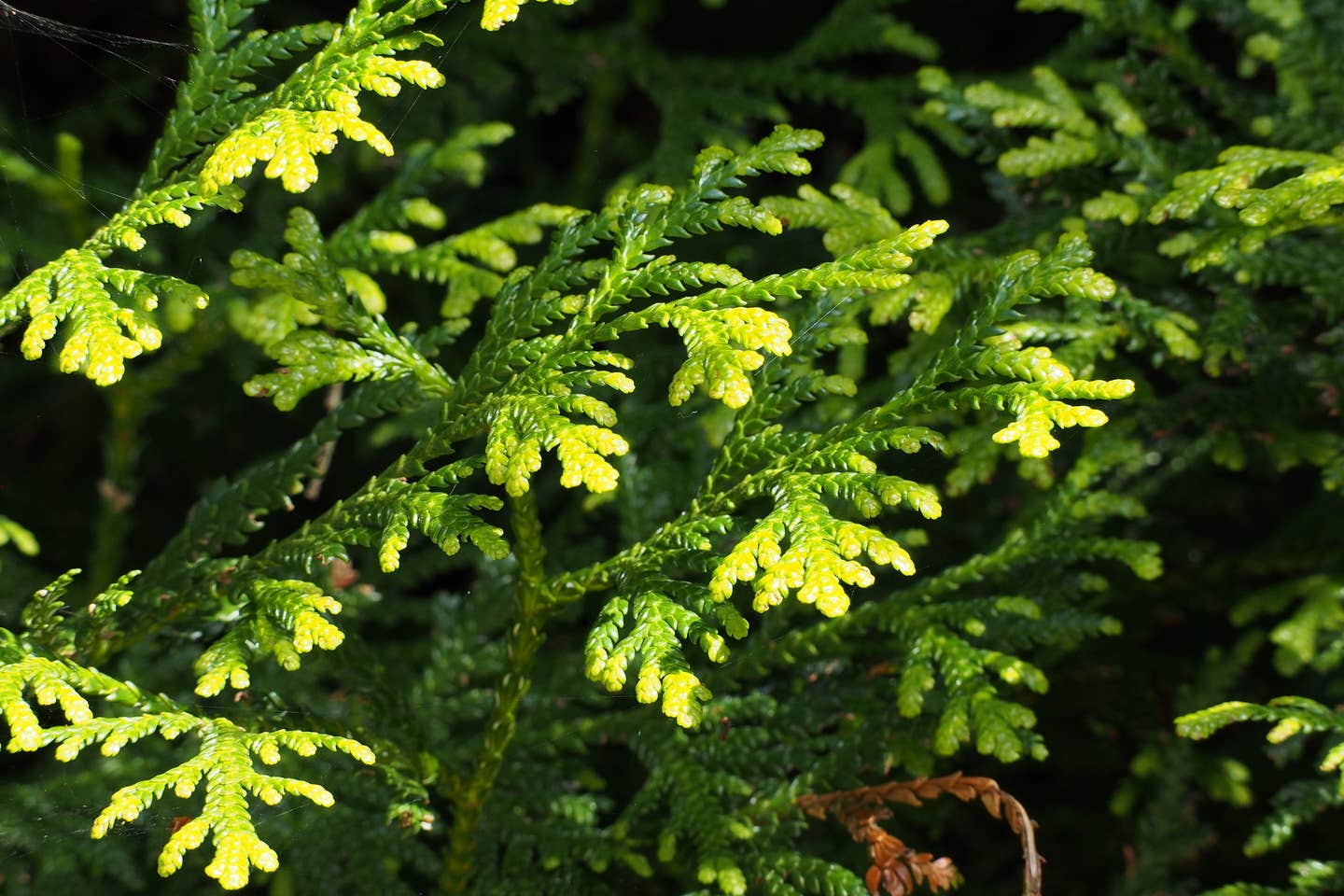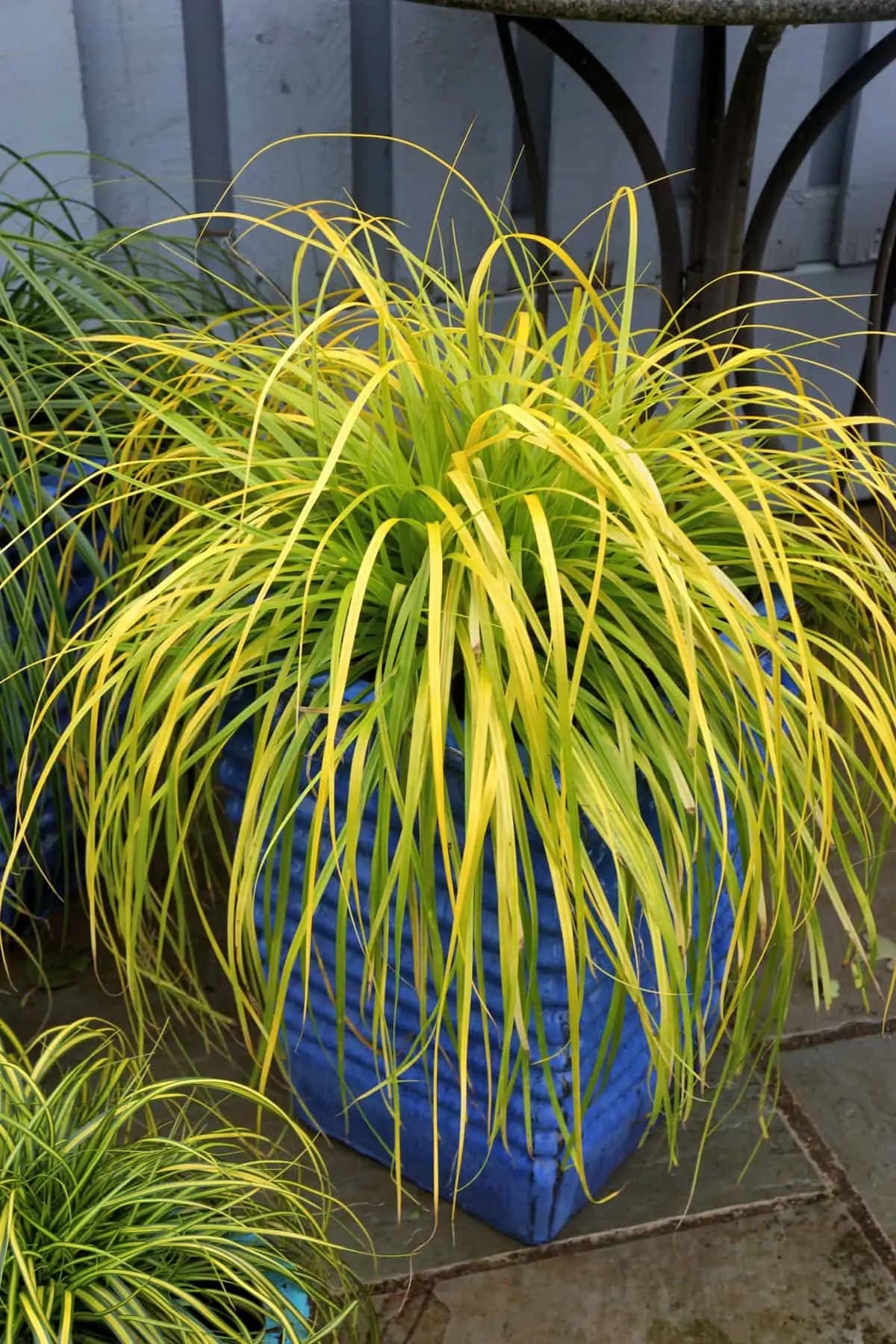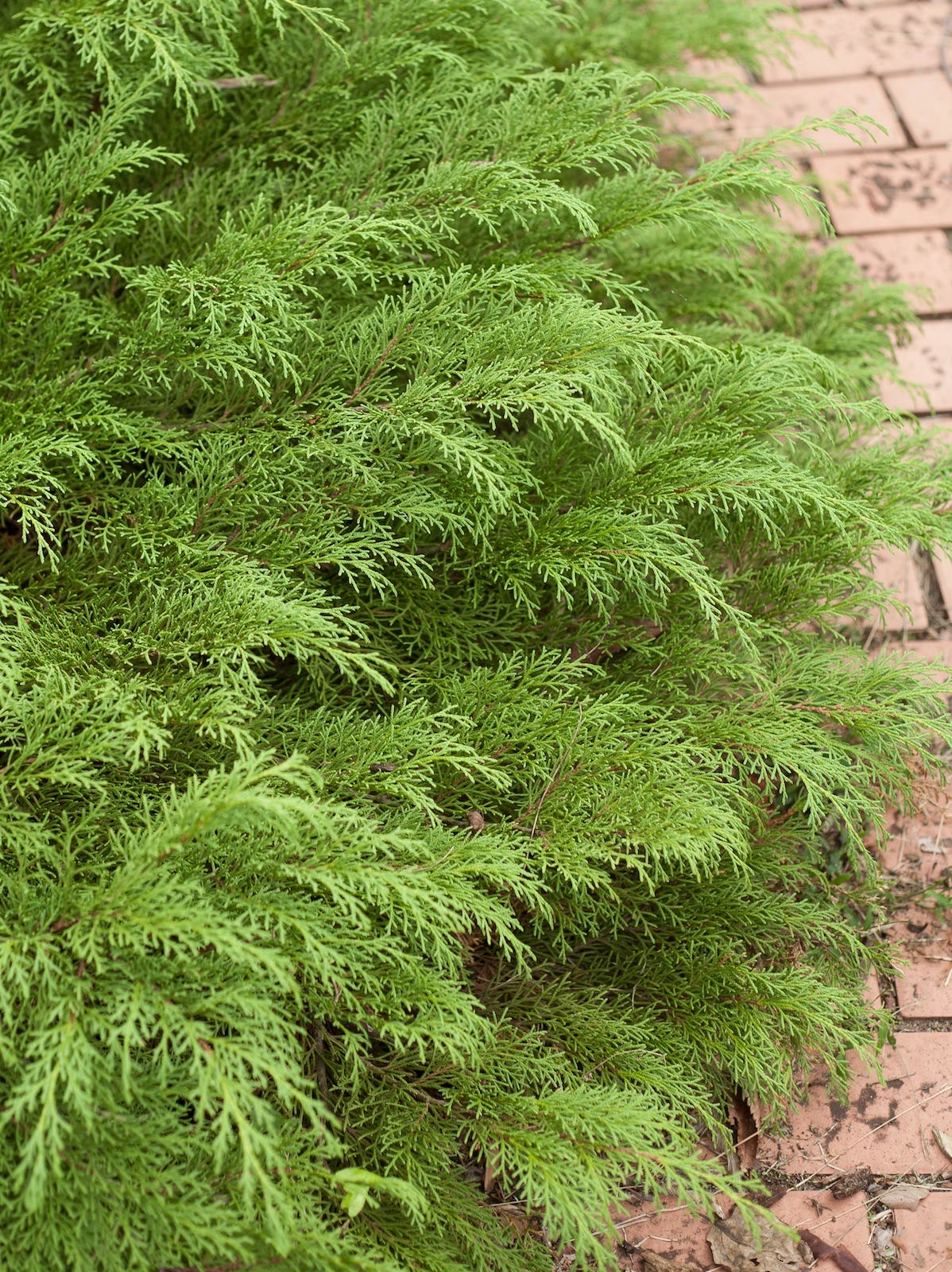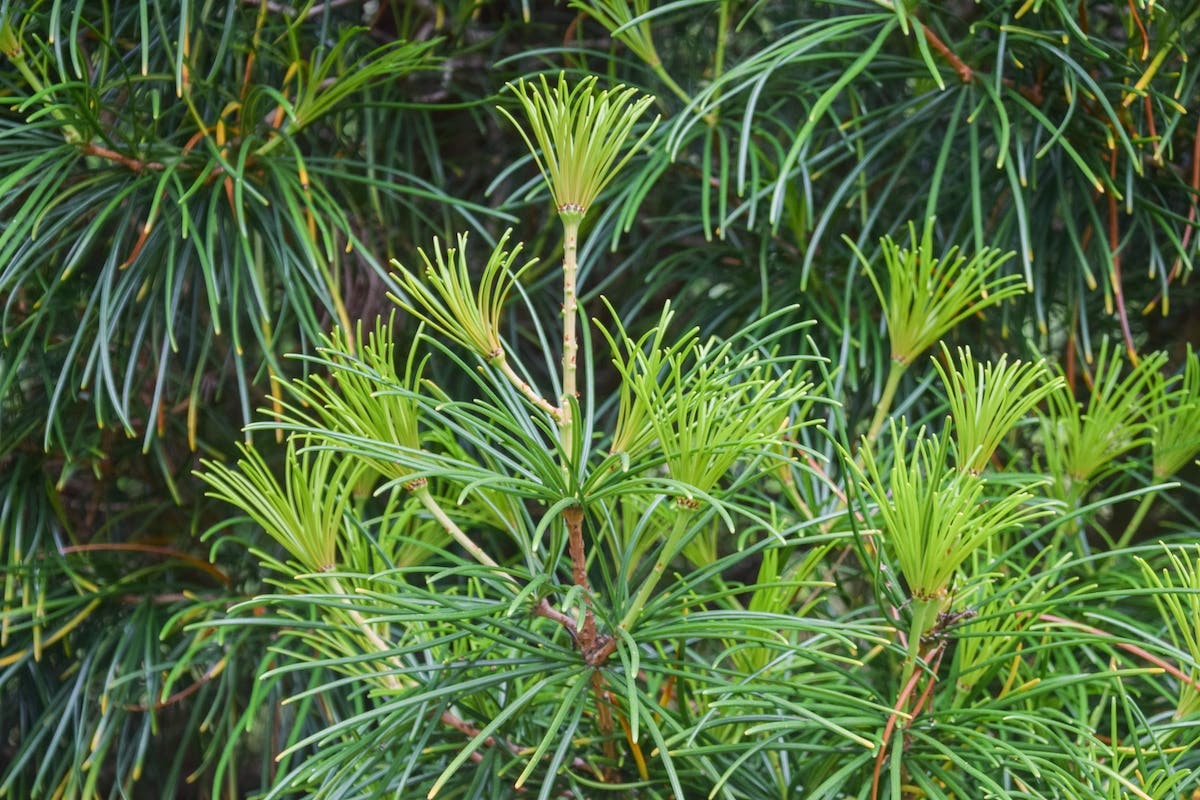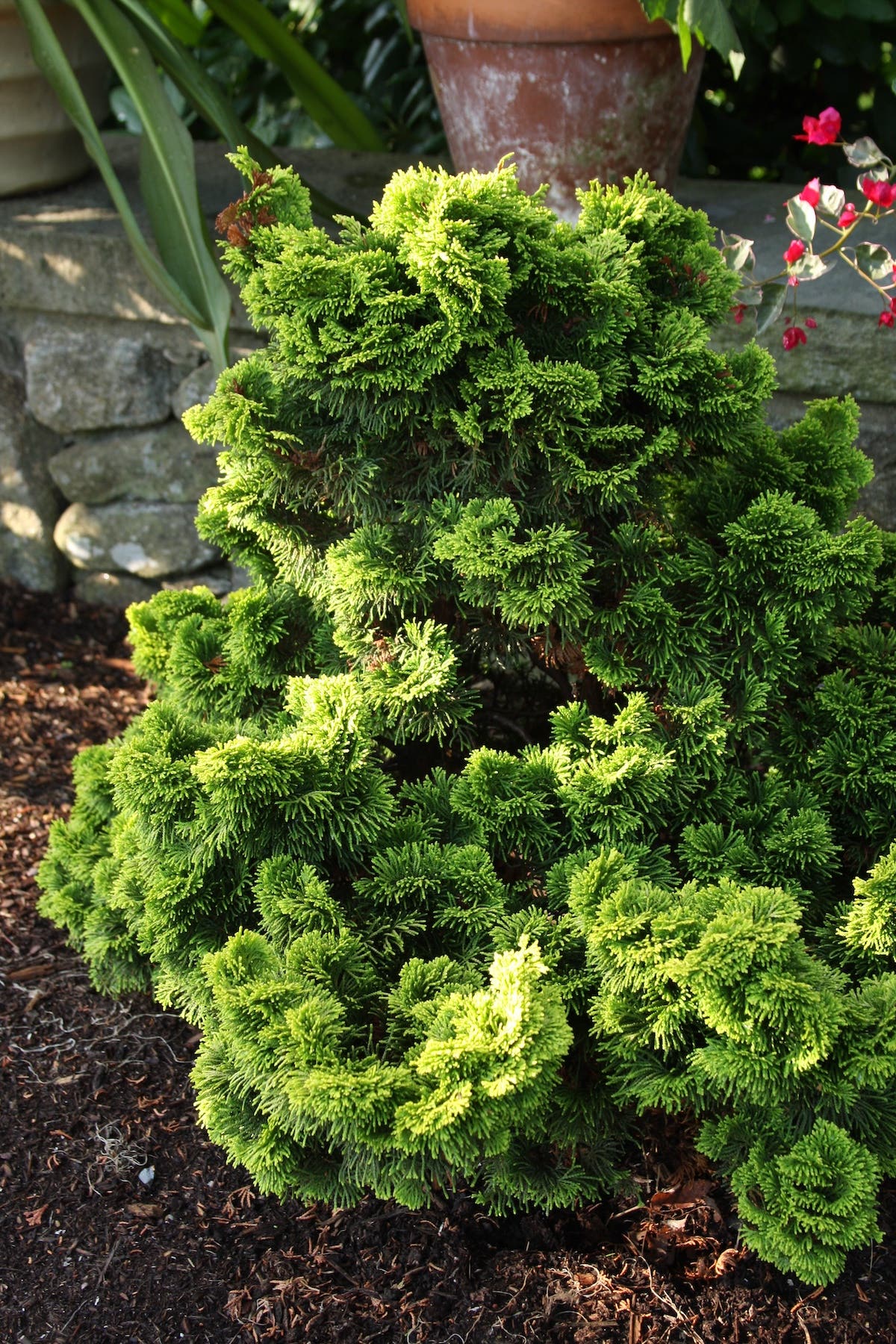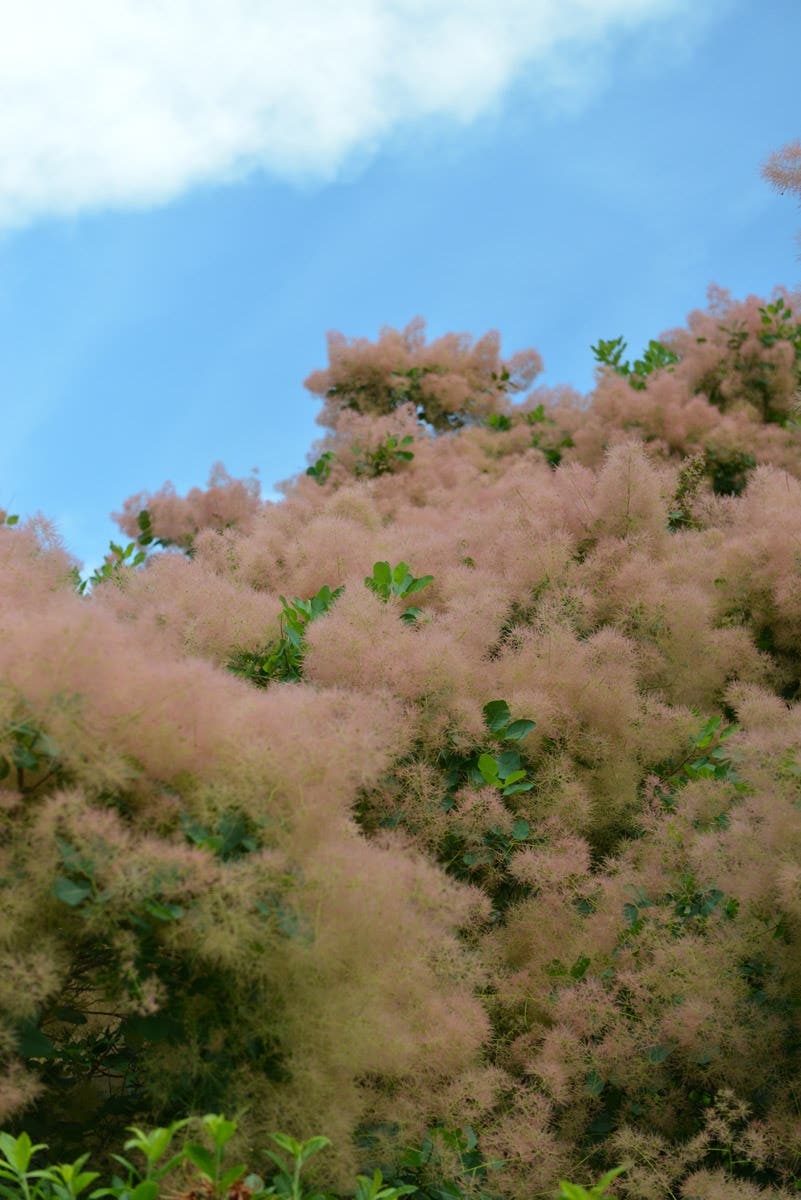Lotuses are emergents—plants that grow in submersed soil but whose leaves, stems, and flowers rise above the water surface—that belong to the genus Nelumbo. There are two main species, N. lutea and N. nucifera. Nelumbo lutea is native to the United States in lakes and ponds from southern Ontario to Florida and from Minnesota to Texas. Although N. lutea has served as a parent plant for many lotus hybrids, it has produced only one natural hybrid, called ‘Yellow Bird’. Nelumbo nucifera is found throughout India, Egypt, China, Japan, the Philippines, Australia, Thailand, and the Caspian Sea region, and in contrast to N. lutea, has produced countless varieties and natural hybrids.
Standard lotuses reach a height of five to six feet, though dwarf varieties reach only two or three feet, and tea-cup lotuses, which are the smallest, reach a height of only 18 inches. Lotuses produce both floating leaves, which lie on the surface of the water, and aerial leaves, which are held aloft. Though leaf size may vary from species to species, all are blue green and shaped like dinner plates. One distinctive characteristic of lotus leaves is that they repel water, causing it to bead up like drops of mercury.
Lotuses (if we include the various forms of N. lutea) have the largest flowers of any native North American plant—including magnolias and hibiscuses—and can reach a staggering 12 inches across, with between 16 and 86 petals. Flower hues range from white to yellow, and from rose pink to red, though some hybrids, like ‘Mrs. Perry D. Slocum' (pictured), change color over time.
Lotus blooms open early in the morning and stay open until midafternoon, when they draw up and partially close. Each bloom will last about three days, although the flowers of some of the dwarf varieties are somewhat longer lived. The flowers give way to distinctive showerhead-shaped seed capsules, which range in color from yellow to chartreuse. Since capsule coloration tends to vary by variety, it can be useful in species identification. The dried pods also make excellent additions to flower arrangements.
HOW TO GROW LOTUSES
Although lotuses appear quite exotic, they are actually hardy to USDA Zone 3 and will survive cold winters, as long as they don't freeze solid. They can be successfully brought into bloom throughout the United States and southern Canada, as long as they receive at least three months of air temperatures between 75 and 85°F and water temperatures of 65 to 70°F. Air temperatures shouldn't be too warm, however, as consecutive days above 90°F, such as occur during the dog days of summer, will inhibit blooming. In Tennessee, where I live, lotuses typically start flowering in May and finish up in August. The pinks and yellows bloom first, followed by the whites and reds. Last year, our lotuses started blooming a month later because of a delayed spring, but a cool, wet summer extended their bloom time into September.
Lotuses grow from tubers about the size of sweet potatoes. Given free rein in a mud-bottomed pond, lotus tubers will grow as far under the soil as they can, where they can be very hard to eradicate. For this reason, I prefer to grow them in containers. For the larger varieties, I use round, 12-gallon pots that are 22 inches wide, 8 inches deep, and don't have drainage holes. Five-gallon pots work well for smaller varieties, as do one-gallon containers for Chinese-bowl lotuses.
To ensure a bloom during the first season, be certain to plant tubers with at least two growth points. Some care is warranted when handling the tubers; they are very fragile, and if the growing points are broken during planting, the entire tuber may die. I plant lotuses in a heavy sandy loam mix (two parts heavy clay soil to one part sand). It's best to plant new tubers very shallowly, in just enough soil to anchor them and keep them from floating away. For their first year, we also submerge newly potted plants under just two to four inches of water. (We've noticed that many aquatic plants cannot tolerate being submersed too deeply during their first season of growth.) By the end of the first season, the plants will have grown enough that they can safely be lowered to two feet.
Because lotuses are heavy feeders, steady fertilization will greatly improve their blooming performance. At our nursery, we start our lotuses with one 10-gram tablet of 10-26-10 fertilizer for every one to two gallons of soil that we plant them in. We've found that replenishing fertilizer as often as twice a month greatly increases the number of blooms.
TOP CULTIVARS
Of all the lotuses we've grown at our nursery, the eight described below are my favorites. ‘Perry's Giant Sunburst’ is the result of a cross made by hybridizer Perry Slocum in 1987 between N. nucifera ‘Alba Plena’ and N. lutea. It is one of the first lotuses to start blooming for us every summer, producing a few soft yellow flowers at a time, about 12 inches across, beginning around mid-May or early June. With leaves of 16 to 18 inches in diameter, this lotus grows up to five feet tall and does well in a 12-gallon container. Because of its height and its simple, delicate flowers, ‘Perry's Giant Sunburst’ makes a particularly good companion for groups of cannas and papyrus.
Although N. ‘Rosea Plena’ (also known as ‘Double Rose’) is a recent cultivar of unknown parentage, it's a tried-and-true performer in my bog garden. We're growing it from the same stock plant that we've had for over 10 years. It produces numerous flowers, seemingly without regard to the conditions it withstood in previous seasons. Some of our plants have grown up to six feet tall and produced leaves 18 to 20 inches across. Its deep rose-colored blooms have lots of petals and can reach up to 10 to 13 inches in diameter. I love to blend ‘Rosea Plena’ with other lotuses to create a mixed display.
Nelumbo ‘Alba Striata’ (also known as ‘Empress’) is another of our original stock plants of unknown parentage. It's very durable, though a moderate—and at times sporadic—bloomer. Its 10-inch blooms, however, sport jagged red margins on the tips of its white petals, and are slightly fragrant, giving the plant an exotically Asian feel that more than makes up for its temperament. ‘Alba Striata’ grows four to five feet tall, with 19- to 20-inch leaves, and does well in 12-gallon container.
To my mind, white varieties are the epitome of the sacred lotus. Nelumbo ‘Alba Grandiflora’ (also known as ‘White Asiatic’) is a solid white, old Asian variety, with flowers that reach up to 10 inches across and stand high above the water. Although a moderate bloomer, ‘Alba Grandiflora’ has a full shape that lends itself nicely to a central display. At full height, plants reach six feet tall, with leaves 16 to 24 inches across.
Perry Slocum is one of the undisputed champions of lotus breeding in the United States, and ‘Carolina Queen’ is one of his 1984 hybrids from a cross of N. lutea and N. nucifera ‘Pekinense Rubra’. Last year I finally grew it, after having coveted it for some time—I was not disappointed. The flowers of ‘Carolina Queen’ are spectacular: soft pink with creamy yellow bases, up to 10 inches in diameter. They stand three to six feet high above the 20-inch leaves, and are exceptionally elegant. While plants will grow in a five-gallon container, using a 12-gallon pot will increase the number of blooms.
The following three lotuses are special favorites. ‘Mrs. Perry D. Slocum’ is another of Perry Slocum's masterpieces, which he bred in 1964 from a cross between N. lutea and N. nucifera ‘Rosea Plena.’ Its 9- to 12-inch blooms start out rose with yellow centers but turn creamy yellow by their third day. In a 12-gallon pot, ‘Mrs. Perry D. Slocum’ can reach four to five feet tall, and sends up multiple blooms displaying their entire array of colors. With large, 18- to 20-inch leaves, ‘Mrs. Perry D. Slocum’ is a magnificent plant that has outsold other lotus cultivars at our nursery.
‘Chawan Basu’ means rice bowl in Japanese, and indeed, I find it as essential to my water garden as rice is to an Asian meal. The five- to ten-inch white blooms with pink margins are slightly fragrant and highly photogenic. At three to four feet tall, ‘Chawan Basu’ puts on an unexpectedly strong display of flowers for a dwarf. It's a wonderful choice for a small container on a deck or patio.
Finally, ‘Angel Wings’ is a lotus whose name says it all. A 1984 Perry Slocum cross between N. nucifera ‘Pekinense rubra’ and N. 'Shirokunshi’ (the tulip lotus), ‘Angel Wings’ bears delicate, white, slightly fragrant blooms with pointed petals, and 15-inch-diameter leaves. Though considered a dwarf at four feet tall, ‘Angel Wings’ is a prolific and inexhaustible bloomer; I've seen up to five blooms open at a time on a single plant. Happily at home in a five-gallon container, this gem of the water garden will take you to new heights.
Growing lotuses in cooler climates
- In USDA Zone 6 and cooler, start lotus tubers indoors for maximum bloom.
- Outside, position lotuses in shallow water to take advantage of full sun and maximum warmth. They will need at least three months of air temperatures at 75-85°F and water temperatures of 70°F to bloom.
- To overwinter plants in ponds, submerge them well below the level where ice will form.
- If you are keeping lotuses as container plants, don't leave them where they will freeze solid. Instead, submerge the plants and put them in a garage or basement, remembering that they will need to be given fresh water occasionally.


